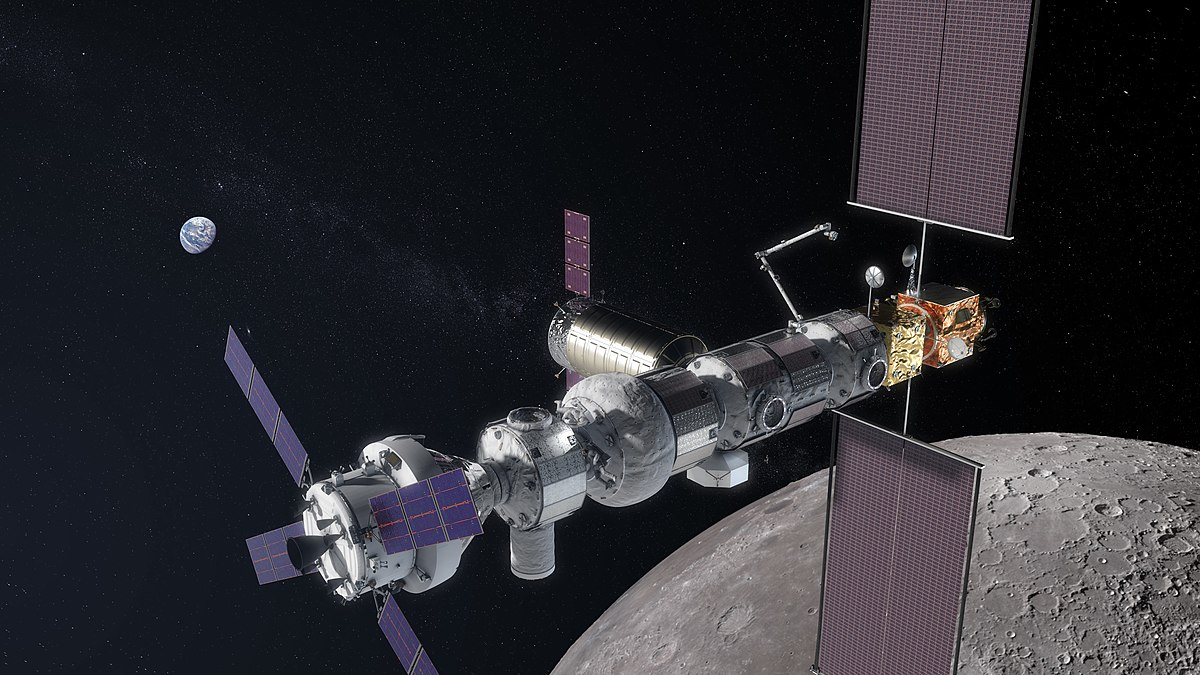NASA is looking for partners in the American industry to create a partially reusable manned lender

According to NASA, a fully assembled lunar orbital platform (Gateway) should look like this.
Now, in fact, the news itself, published on the NASA website:
Feb. 7, 2019 by
NASA Seeking out on the Moon on
the Earth under the Space Policy Directive-1 , NASA announced plans on Dec. 13 companies and companies on the lunar surface. The agency is planning to test new human -class landers on the Moon beginning in 2024, with the Goal of sending crew to the surface in 2028. The
hrough multi-phased lunar exploration Partnerships, is NASA's Asking American companies to study the: best Approach to landing astronauts on the moon as well as anticipated technologies.
“If you’re in the world?”, We’ll expand our partnership with the United States. “When we’ve been sending the astronauts of the decade, we
’ve been going to be a sustainable fashion.” and safe return. Key the aspect of A Proposed Approach the this is to use the Gateway for roundtrip Journeys to and from the surface of the Moon.
Using the Gateway to Land for Astronauts on the Moon permits the use of building blocks for fully reusable lunar landers. NASA's Expects to two two INITIALLY of the lander elements to the BE and reusable refueled by cargo ships Carrying fuel from Earth to the Gateway . Rocket propellants using water is also working. Once the ability to propellant becomes harder, it’s not possible. This process, known as in-situ resource utilization or ISRU , will also be refuelable and reusable.
NASA published a formal request for proposalsSpace Agency for Exploration Partnerships ( NextSTEP-2 ) Broad Agency Announcement (BAA) on Feb. 7, and responses are due March 25.
For us, the most interesting information is contained in the three slides that make up the Attachment_A _-_ Reference_Architecture.pdf file , published on February 7
Here we see three steps to create a Gateway (for simplicity, I will call it LOC (Lunar Orbital Station or Gateway) and parallel testing of manned elements It’s necessary to keep in mind that the concept is still evolving, besides, the time is clearly floating.This

is the first stage, according to the plan, this is 2024. By this time, the Senate Lunch System “The Power and Propulsion” should already be in circumlunar orbit. E lement (PPE) ", weighing 8-9 metric tons, equipped with solar batteries, capable of providing its 50 kW electric ion engines. On PPE it is planned to mountAdvanced Electric Propulsion System (AEPS) , including four ion engines.
According to the plan in 2024, two modules should be delivered to the near-moon station, using SLS, in parallel with Orion, The European System Providing Reflection, Infrastructure and Telecommunications (ESPRIT) and The US Utilization Module. The European ESPRIT module will provide additional stock of xenon and hydrazine, additional communications equipment and a gateway for scientific packages, as well as the possibility to refuel PPE. It will have a mass of about 4 tons and a length of about four meters. The American module will provide the first, still small, living space. It is planned that both of these modules will be delivered to the Gateway during the EM3 expedition, with the participation of four astronauts and a duration of up to 26 days.
In addition, in 2024, it is planned to test the first element of the Lender, the landing stage, which should be delivered to the Gateway using a commercial carrier, and land on the lunar surface.

According to the plans, by the end of 2026 Gateway should receive one more residential module from the States and the second from partners, their delivery should be made with the help of SLS during the expeditions EM4 and EM5. All three residential modules will provide stations with 125 cubic meters of residential volume.
For 2026, a full-fledged test of a partially reusable lender in unmanned mode is planned To do this, a new landing platform and the reusable Venice Element must be delivered to Gateway by two flights of commercial rockets. With the next Orion flight, a reusable Lunar Ascent Element will be delivered to the Gateway, the takeoff cabin of the Lender. Thus, after assembly, during an unmanned flight, the Lender will be fully tested in automatic mode, simulating the real landing of astronauts on the lunar surface.

By 2028, the creation of the Gateway should be largely completed. The latest permanent module in its composition should be a lock module, the construction of which was negotiated with Roskosmos. This year, according to the plan, the new filled landing stage and fuel for refueling reusable lender modules should be delivered by three flights of commercial carriers. After that, the landing of four astronauts on the surface of the moon is planned.

This is a diagram of the lunar Gateway, as it appears at the moment. It should be borne in mind that some of the modules presented in the diagram are not part of the station. So the Sample Return Venice is actually a small independent unmanned lander, and the module under the letter G, “Logistics and Utilization” is actually a cargo module of a transport ship, roughly the same as Signus.
